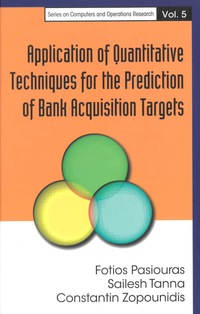


7. Fractions and Percentages Much of the subject matter in environmental science involves understanding how a fraction or percentage of a whole is distributed across many parts. The fraction of greenhouse gases emitted by each country, the proportion of fish that reproduce before they are caught, and the percentage of water falling on a mountain as snow are all examples of important environmental quantities best understood through fractions and percentages. Data sets presented in tables frequently express the division of a whole into parts, with each entry in the table representing one part of the whole. Remember that a fraction is a way of representing division of a whole into parts; it has the form of numerator /denominator, or "Numerator"/"Denominator", where the numerator is the number of parts chosen and the denominator is the total number of parts. When both the numerator and denominator share a common factor, you can simplify, or reduce, the fraction by dividing both by that common factor, so that the smaller numbers represented are more easily understood. When data can be summarized in the form of a table, a graph is not always needed, particularly when the table shows parts of a whole. Tables can also help organize information, provided that the information is presented in a clear-and not overwhelming-manner. For example, one projection of global human population suggests there will be 8 billion people on Earth by 2025, with an age distribution indicated by the left-hand column in the following table. The World Bank recognizes two broad "income" categories that describe the basic economic condition for all those people, as shown on the header of the table. Be sure to read the caption of the table to learn the units and other details of the data. 1 Riahi, K., van Vuuren, D. P., Kriegler, E., Edmonds, J., O'Neill, B. C., Fujimori, S., ... Tavoni, M. (2017). "The Shared Socioeconomic Pathways and Their Energy, Land Use, and Greenhouse Gas Emissions Implications: An Overview." Global Environmental Change, 42, 153-168. https://doi.org/10.1016/j.gloenvcha.2016.05.009. The table represents the SSP 1 and SSP 5 models.sss 2Combining the "Low" and "Lower Middle" categories into "Lower" and the "Upper middle" and "High" categories into "Higher" for simplicity. Projected Global Population in 2025 by Age and World Bank Income Class (millions) Age group Lower Higher Total 64 250 750 1,000 Total 4,250 3,750 8,000 Sources: Adapted from World Bank (income classes by country), United Nations (population by country and age). From this table you can glean different kinds of information about the income and age distribution for the population expected in 2025. This age- wealth distribution is of key importance for understanding the long term environmental integrity of the planet. Use the table to calculate the fraction and/or percentage of various age-income groups, as indicated in the following questions. Expressed as a fraction, what proportion of the 8,000 million population in 2025 do the 2,000 Lower and 25-64 groups make up? Because all the values are in millions, you need only enter the values in the table to get the correct answers. Reduce your fraction to the lowest terms. O 3/32 O 1/2 O 1/8 O 1/4 01/16 You can also express the various age-income populations in 2025 as percentages. Percentages are essentially a fraction of 100; as a result, when you say percent, you are really saying "per 100." It is often denoted using a percent sign (%), which is an easier way of writing the fraction with a common denominator of 100. For example, higher-income groups will make up approximately 47% of the global population in 2025. This means that out of 100 hypothetical people, 47 of them will be in the higher income group, or, more simply, there are 47 higher-income people per 100 people. Expressed in fraction form, 47% is equal to 47/100, or 0.47 in decimal form. Expressed as a percentage, what proportion of the 8,000 million population in 2025 do the 500 Higher and 64 age group people in 2025, 60% of them are over 80 years old, called octogenarians. Expressed as a percentage, what proportion of the 8,000 million people in 2025 will be octogenarians? Give your answer to one decimal place. O 10.0% O 7.5% O 2.5% O 5.0%









